author
Jacques Lawinski
post
- 07/02/2023
- No Comments
- Politics
share
A miraculous solution to stop waste production and lead sustainable lives, or a grand delusion which doesn’t actually work, and simply justifies keeping the status-quo approach?
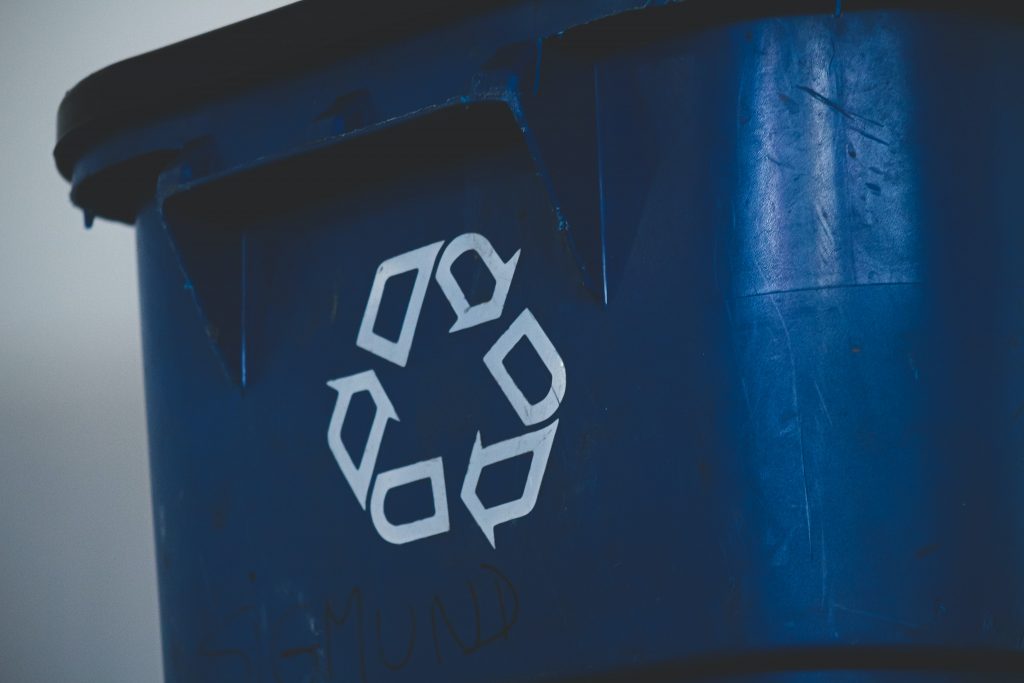
The idea of a circular economy is not a new one. Waste and the offcuts of human activity have been used and reused for millennia – and the old saying “one person’s waste is another’s treasure” has continued to circulate in our everyday language to resurrect this idea. In the third decade of the 21st century, however, we are beginning to see the circular economy becoming a larger-scale project both in business and government, who claim that this is the solution we need to be able to transform our economies to combat climate change and the wider ecological problem.
At its most simple, the circular economy is an exchange of goods and services in which waste is minimised, and things are recycled and reused as much as possible. Think of it like glass bottle recycling, but on a massive scale. Our phones, washing machines, t-shirts and sports shoes should all become a bit like the glass bottles: recycled and transformed into other products that we can use again.
On the face of it, this might seem like a great model for the economy. After all, we know that waste is becoming a major problem for many countries across the world, as we consume more and more goods made of synthesised materials such as plastics, cotton and polyester mix clothing, electronic devices, and more. A zero-waste economy, therefore, would seem to solve the problem we are having with waste and pollution, and help us to reduce our environmental impact.
However, as we will see, this is a nice idea that simply doesn’t work in the biosphere. The assumptions used by proponents of the circular economy are often misguided and uninformed, meaning they go against fundamental principles of life on Earth. And from an economic point of view, the circular economy is based on a very big hypothetical statement – a very big IF – that as we are seeing, is proving not to be the case.
Let’s delve into the circular economy, to see what lies behind this big idea. We’ll start with the arguments from those who support the circular economy, and then look at the critiques.
In support of a circular economy
The New Zealand Government seems to have also adopted the idea of a circular economy, ōhanga āmiomio, along with much larger international bodies like the European Union, as a way of managing waste, saving money, and encouraging jobs and innovation.
New Zealand also has various organisations working in what they call an “ecosystem” (we’ll think about that terminology later!) of circularity, including Circularity.co.nz and XLabs. There is also Āmiomio Aotearoa at the University of Waikato, with around 50 researchers looking at the circular economy.
Their main point of reference is the Ellen MacArthur Foundation, an organisation set up by scientist Ellen MacArthur to promote the circular economy on a global scale. On the site, we see that there are three key pillars to the circular economy:
- Design out waste and pollution. This means that we create a zero-waste economy. We are no longer polluting rivers and streams, no longer emitting large amounts of carbon dioxide and other greenhouse gases without compensating for our emissions, and we are certainly not sending large truckloads of materials to landfill or incineration.
- Keep products and materials in use at their highest value. Everything that we extract is used, all materials are reused and recycled, and nothing is simply left and abandoned as an unusable resource. An old pair of shoes could be made into a sports ball and a t-shirt; a broken table could become a fence…
- Regenerate natural systems. This is through the use of renewable energy sources like hydro power, solar power, wind energy, etc., as well as actions taken to actively restore unproductive soil, polluted rivers, and take carbon dioxide out of the atmosphere.
These three principles, according to the Foundation, are inspired by nature, and by natural cycles. Nature works in a complete loop, apparently, and materials are constantly recycled and put to a new use.
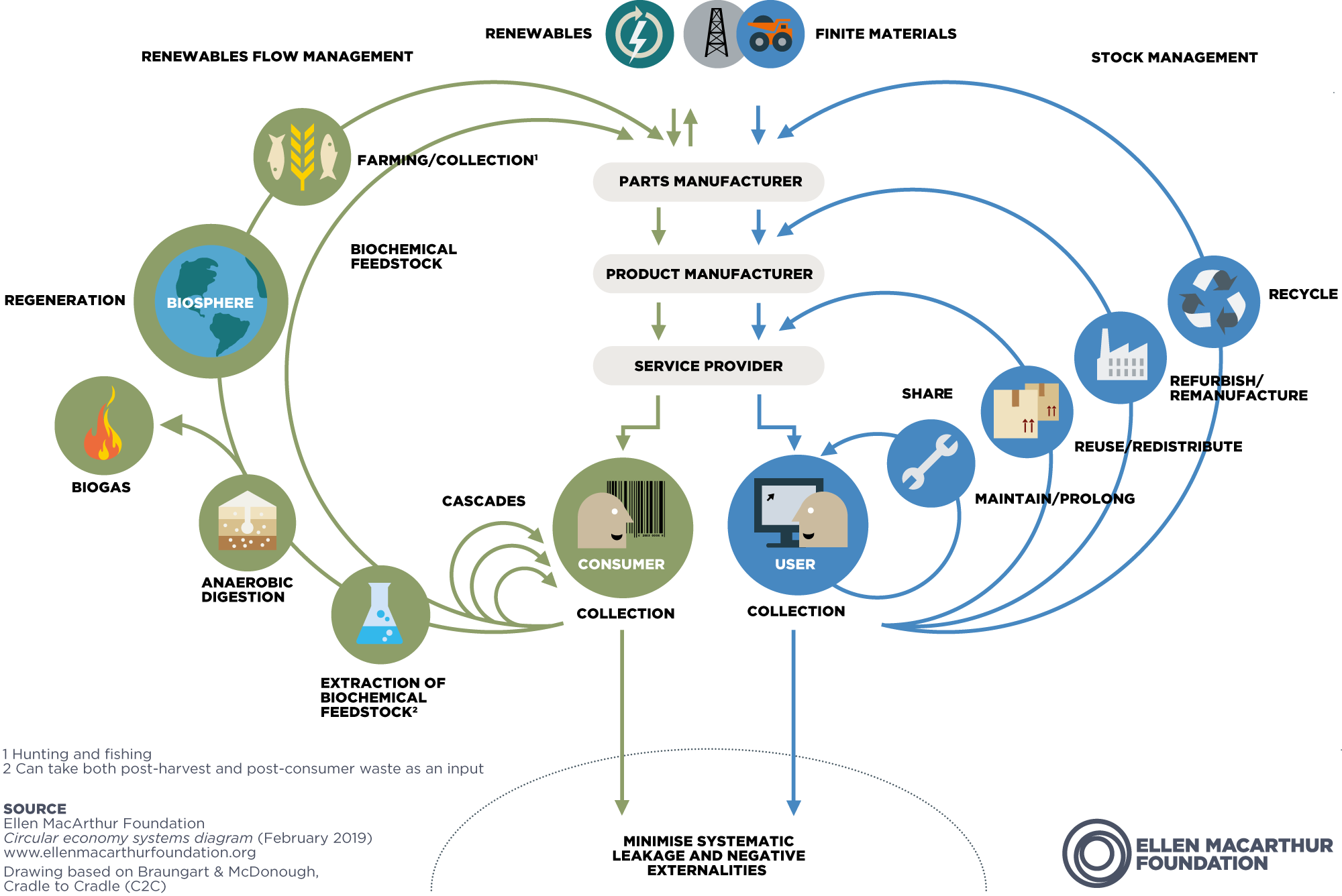
The Foundation has designed the above butterfly diagram to explain how the circular economy works. We see that we minimise both the inputs into the system, and the outputs or waste that comes out of the system. We also see that both natural cycles in the biosphere in green, and human-created cycles in the technosphere, or the economy, in blue, are part of our circular economic system.
The economic arguments
The circular economy aims to “gradually decouple economic growth from virgin resource inputs.” (Ellen MacArthur Foundation). This means that they want economic growth to become independent from the natural resources that flow around the economy. In essence, the economy can grow and continue growing whilst we are on a planet with limited resources. How do they think that is possible?
The answer comes from Nobel-prize winning economist Robert Solow. He gave a conference lecture entitled “The Economics of Resources or the Resources of Economics” in 1974, laying out his ideas on resources. According to Solow, the reason why we have economic growth is not because of more capital, or more labour inputs. Capital and labour are considered the two factors of production in neoclassical economics, which determine the nature of our production systems. Instead, economic growth is due to technical improvements – the economy grows because we become more efficient at exploiting resources and more powerful in our technological capacities. We can get more done in less time, spending less money doing it.
In the case of the market for natural resources, Solow writes that, “If flows and stocks have been beautifully coordinated through the operations of future markets or a planning board, the last ton produced will also be the last ton in the ground. The resource will be exhausted at the instant that it has priced itself out of the market.” This exhaustion of the resource – meaning that we’ve used every last drop of oil in the ground, for example – is not a problem for Solow. This is because the market will know that we are approaching extinction, and begin to develop technologies that are able to replace this natural resource. As the natural resource becomes scarcer, it will become more expensive. In turn, the synthetic resource will become cheaper, and more widely used. The “invisible hand” of the market, or a central planning board, will govern all of this such that we can just keep going, despite having used all the oil, coal, gas, rare metals, wood, etc.
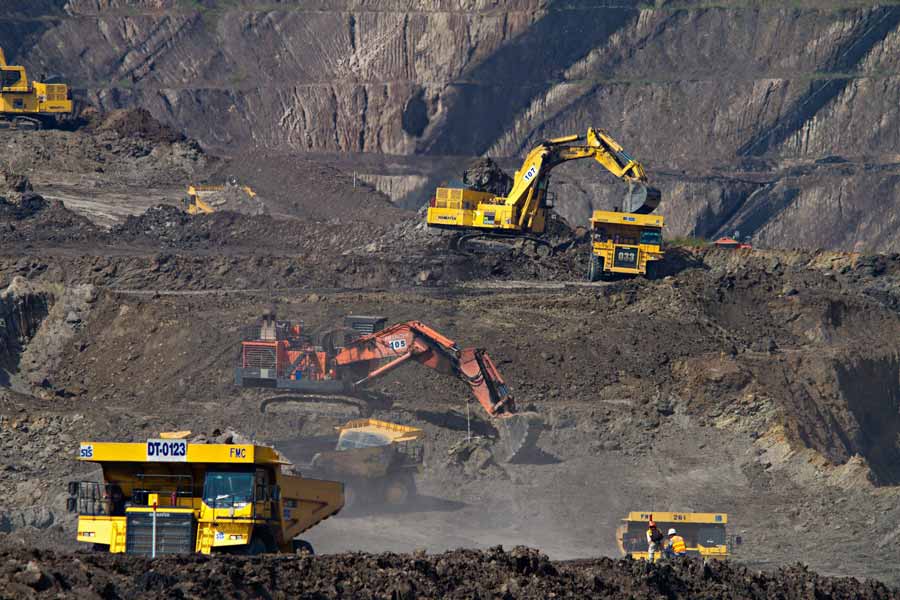
Here’s the key quotation in full, that you will often see cited in discussions of Solow’s economics:
“If it is very easy to substitute other factors for natural resources, then there is in principle no “problem.” The world can, in effect, get along without natural resources, so exhaustion is just an event, not a catastrophe. If, on the other hand, real output per unit of resources is effectively bounded—cannot exceed some upper limit of productivity which is in turn not too far from where we are now—then catastrophe is unavoidable.”
Therefore, because technology will help us to replace natural resources, we don’t need to be worried about running out. The economy can and will continue to grow because growth doesn’t depend on material inputs, but on technological advances.
Solow assumes that we can replace natural resources by technological resources as perfect substitutes. If this is not possible, Solow knows that we are heading towards unavoidable catastrophe. Many accounts of his economic viewpoint will only provide the first half of this quote. We should keep in mind that Solow was not ignorant towards what he was proposing, and the consequences if it turned out not to be true.
Finally, let’s think again about the benefits of the circular economic model. If we’re not producing waste, then we will no longer be polluting local ecosystems, nor the biosphere in general. This will have a positive effect on the environment: ecosystems will be able to regenerate, less greenhouse gases in the atmosphere will stop global warming, and more. Additionally, when materials are reused and recycled, rather than simply purchased again, we require people and skills in order to undertake these repairs and manage the recycling systems. This will create jobs in the economy, and stimulate innovation in order to find new, cost-effective, efficient ways of reusing and recycling materials in the economy.
You're reading an article on Plurality.eco, a site dedicated to understanding the ecological crisis. All our articles are free, without advertising. To stay up to date with what we publish, enter your email address below.
Critiques of the circular economy: Back to reality
If we were living in a bubble outside of this Universe, the circular economy would be wonderful. The problem is, we’re on planet Earth. The economy doesn’t exist outside of the chemical and physical laws that govern our universe. We human beings don’t live outside of these natural cycles either. Let’s see why the idea of a circular economy is just an illusion. Reading these critiques, we should be worried that the circular economy is gaining so much ground as a real project to be implemented. As Keith Skene from the Biosphere Research Institute in the UK wrote in 2017, “almost all of the principles underpinning the circular economy have the potential to destabilise the biosphere if they are applied in the real world.”

Circles don't grow
Have you ever seen a closed cycle that, by itself, gets larger and larger? I certainly haven’t. If we really had a circular economy, the same things would be going round and round, being transformed and retransformed again and again. This, however, doesn’t equate to growth as we were promised. The only way to achieve that growth would be to think of the economy as a spiral, going round and round, but at the same time accumulating more and more so that the spiral grows bigger as time goes on. On the metaphorical level, a circular economy in which growth happens is not possible: circles don’t grow. Machines and technology might become more efficient, but they need more and more energy to run, and they require some material resources to be produced in the first place.
The supporters of the circular economy claim that this circularity is influenced and inspired by nature, and natural systems. According to them, nature is a zero-waste system, and so we should try to mimic nature and do the same. They believe that the Earth, and therefore the biosphere, is a closed system in which energy in the form of matter circulates constantly. Skene writes of this idea of nature: “Referencing nature is any attempt to justify zero waste, eco-efficiency, optimisation or circularity is, at best, misleading. Nothing could be further from the truth.”
In fact, the biosphere is an open system. This means that it requires inputs, and has outputs. The largest input into the biosphere is solar energy coming from the sun. Life in the biosphere tends towards increasing complexity. As the biosphere becomes more complex, more and more sunlight energy is required from the sun for this system to be maintained, and to increase again in complexity. This natural system is not efficient, either. The biosphere converts free energy into waste energy – that’s what life is and does here on planet Earth. Nature, in fact, is hugely wasteful. It most certainly isn’t optimised, either. In complex situations, fast recycling is favoured over durability, sustainability, optimisation and use of resources, and many other supposedly natural variables. You will not find an ‘optimised’ natural system.
XLabs claim to be able to teach their participants about nature: they talk about “Mirroring nature to radically redesign the system for optimal resource use.” A zero-waste economy is simply a fiction. The mere fact that we, human beings, are biological creatures in the biosphere, means that we will continue creating waste for as long as we exist. The economy will continue producing waste, because this is how the universe functions. Optimisation and nature do not fit in the same world.
Humans and the biosphere: inputs and outputs
The third pillar of the circular economy is the idea that human economic activity can contribute to the regeneration of natural ecosystems, or at least keep these natural systems working at their highest utility and value. The diagram of the circular economy has two sides, depicting two cycles, which are interrelated, and which human beings would therefore need to manage and control, under the name of economics.
According to Mario Giampietro, at the University of Barcelona in Spain, and many other thermodynamic scientists, the circular economy takes no notice of the directions of material flows in the economy. They measure the flow of money, and therefore the flow of goods and services, but not natural resources, energy, water, and other elements which flow through the biosphere and interact with the technosphere (the sphere of human activity).
Natural cycles require absolutely enormous amounts of energy. Giampietro makes a revealing comparison: in 1999, human beings required 11 TW (terawatts) of energy for all their needs. Just for maintaining the water cycles around the Earth, the biosphere used 40,000 TW of solar energy in one year. When we look at the diagram of circular economy designed by the Ellen MacArthur Foundation, we see natural cycles on the left and human cycles on the right. In actual fact, if these arrows and circles represent energy flows, the human cycles would be infinitesimally small in comparison with the natural cycles. Nature has huge amounts of energy coming into it from the sun, and huge amounts going out as waste, too. Such a model would lose all sense of ‘circularity’ that seems crucial to the idea of the circular economy. There is definitely not a closed system of nature as XLabs seem to promote – there are simply not enough energy sources on Earth for this to be possible.
Let’s also think about the flows of water. In Europe, it is estimated that 7,500kg of water per day is required for agricultural needs of one person. This doesn’t include urban water usage, or industrial water usage. Just the water used by plants and animals that sustain the life of this human. When water is not included in the economic calculations, 35% of the European economy is recycled. It seems possible that we can end up with a 100% recycled economy – a circular economy. When we include water, however, which is not recycled by us at all, but rather through natural systems, we end up with 0.005% of the economy which is circular. If we included energy flows, raw materials, and all the other natural cycles, we would end up at almost zero percent recycling rate. We create waste, in far greater quantities than we would ever be able to recycle what we use.
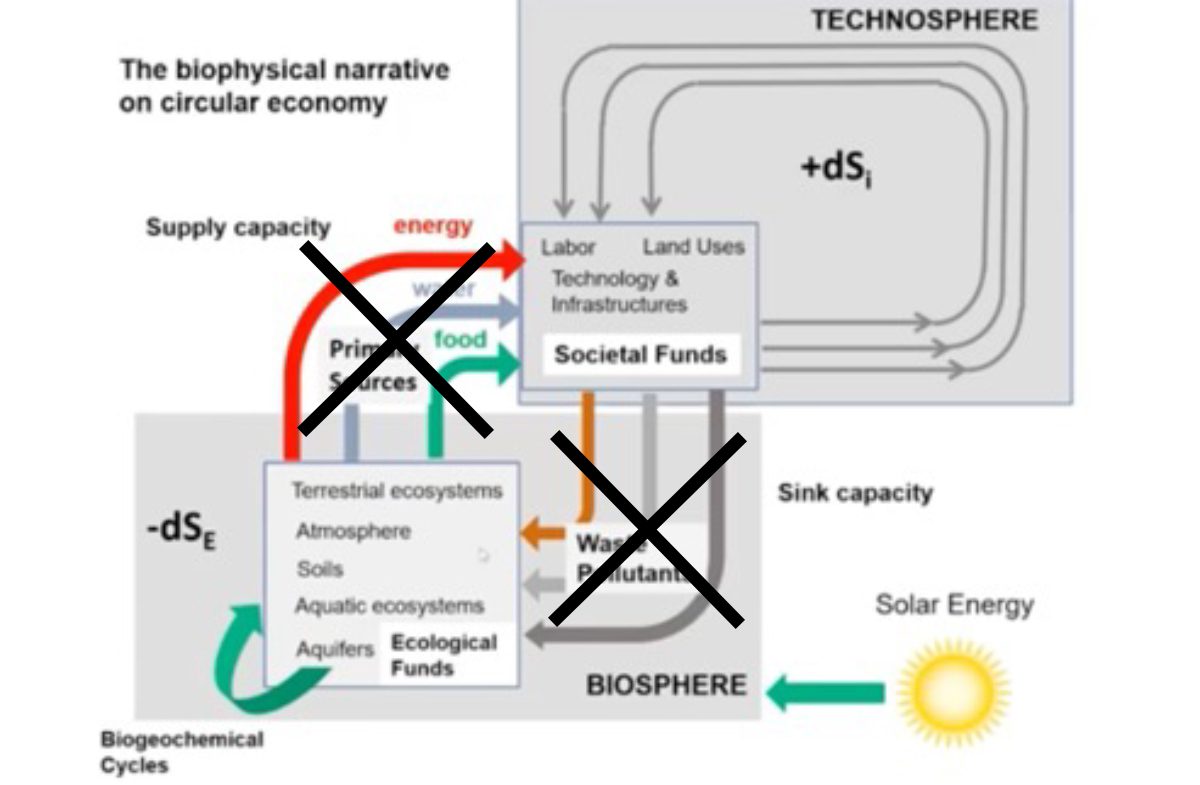
The idea of the circular economy is to therefore cut out two central pillars of the biosphere – inputs of energy, and outputs from human waste back into the biosphere, as is shown here. This is nonsensical, akin to proposing to sell computers where the wires to charge the battery with are cut, and the wires to illuminate the screen are also cut. Inputs and outputs are avoided, so that the computer can function in a circular way. The company would be bankrupt before their product even went to market: nobody would even invest in their idea. Zero-waste, zero input circular economies are physically impossible.
Back to the economic argument
Remember that Robert Solow claimed that we could get along fine without natural resources, because technology would just replace out these resources with other goods? Let’s put that claim under the microscope. When we use all the rare earth metals, what will we make more solar panels with? More electric cars with? When we use all the fresh water, what will we drink and feed our plants with? When all the soils are destroyed, what will we grow our plants in? What will animals live off? Will technologies really be able to solve all these problems in the next 30 years?
We cannot live without natural resources. The economy cannot “get along without natural resources.” To grow plants we need soil, and the way soil regenerates is so complex that we are yet to understand it. What we know is that when we use ammonia and nitrogen-based fertilisers to optimise the soil over one or two growing cycles, we kill all life in the soil and it becomes dead and unproductive. We can’t get by without soil, and the only way to have healthy soil is to promote biodiversity on the land, and not to use technologies that make this soil more efficient, such as ploughs, and artificial or even ‘natural’ fertilisers. Further, we cannot ‘produce’ productive soil, the only soil that will be productive is that which is on the Earth and is there now. For a great first-person account of the impact that these technologies have on soil and the farming system, read English Pastoral by James Rebanks.
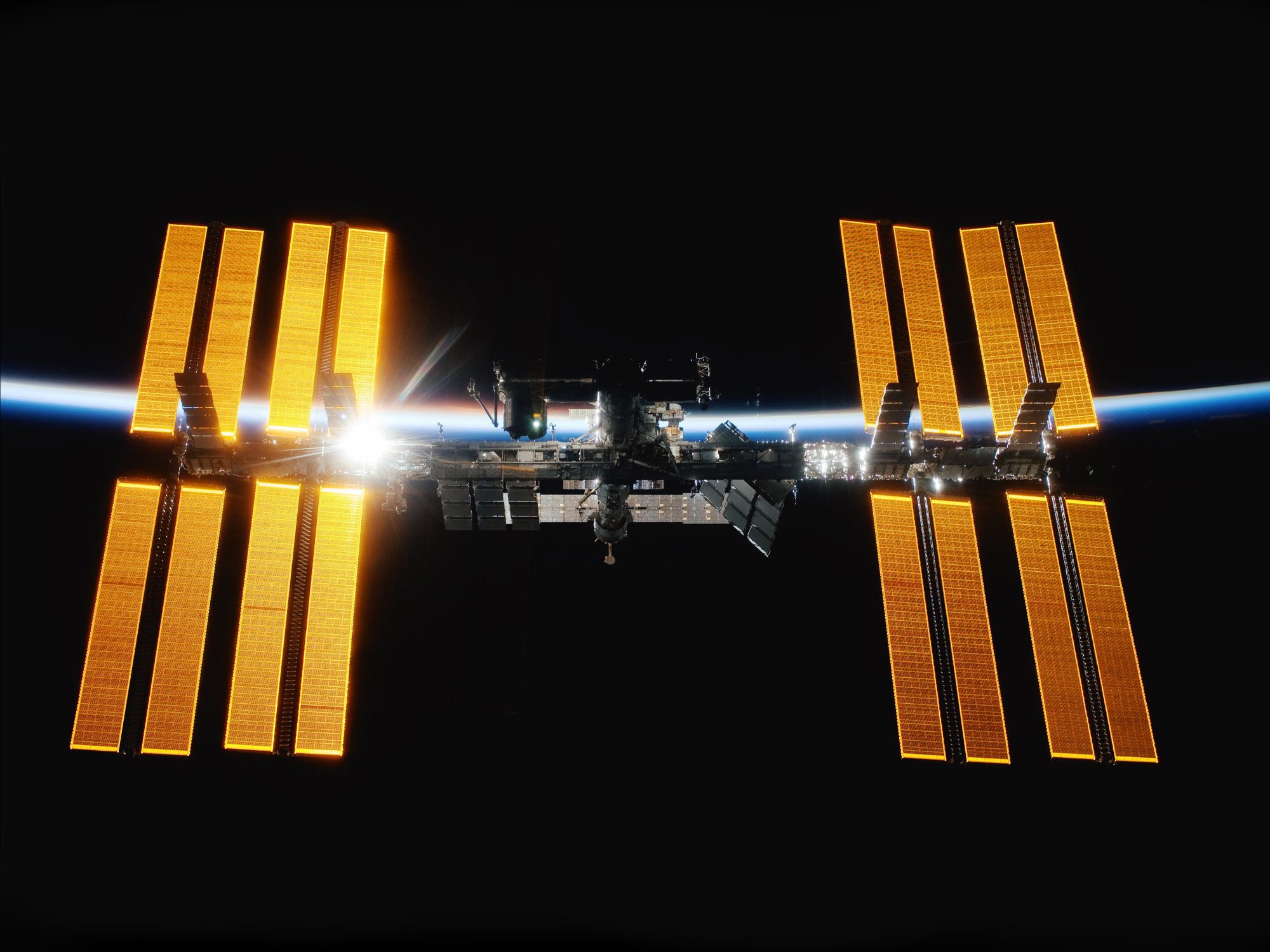
We also cannot live without waste and without inputs of energy and resources. The International Space Station is perhaps the best example of human engineering of a standalone climate-controlled system, and even there, they still require food to be sent up, and eject waste out of the station regularly. We simply cannot replicate all the functions of the biosphere by ourselves.
Therefore, the only option left to us by Solow is a complete catastrophe. And that is where we are heading, and where we would continue to head, if we attempted to adopt the circular economy model as our national economic system.
Solow saw resources as being things like fossil fuels, and that’s understandable, given that in the 1970’s the discussions around global warming and the burning of fossil fuels were getting more heated, and alternative visions were being proposed. Solow sought to promote the idea that technology would get us through, and that we would be able to continue economic growth through using more technology. We wouldn’t have to change our institutions, our economic systems; our addiction to growth could carry on unharmed, because the market forces would sort us out. The very causes for the ecological crisis will in some future scenario enable us to confront our current problems. It’s like trying to treat a cut with a knife.
Solow did however know the other possibility: catastrophe. Supporters of the circular economy such as the Ellen MacArthur Foundation seem to have lost this nuance, however, taking the idea that we can grow and live without natural resources as an economic doctrine, rather than a conditional statement relying on assumptions about the market and about technology. They show no reflection on what ecology has taught us in the past 50 years: the world most definitely does have limits, and human beings must definitely stick within these limits unless they want to risk the future not only of themselves, but of many other life forms on Earth.
Additionally, the circular economy assumes that the natural cycles of the biosphere can be monetised and valued, and therefore quantifiably brought into the economic system. That’s why the biosphere features on their model of the economy. It is simply impossible to value the water cycle or the flow of nutrients or the processes of photosynthesis. Without these, life would not even exist, they are of innumerable value to all life on Earth. They also cannot be quantified and managed by economists, or the very best ecologists, either.
An ideological agenda of technological saviours
The circular economy seems to be yet another way of promoting a highly technical future, whereby economic doctrine such as prioritising growth above all else, and believing in the magic powers of market forces, are able to be preserved, whilst minor changes in product design and coordination are adopted, and large aspects of life are under technological surveillance and management.
If we think of the environmental debate as having two large narratives, which oppose each other, the circular economy is presented as a solution by one of these sides. The larger story informs us that technological progress will save us from ecosystem collapse and climate change, and that human control and management of the environment will enable ecosystems to restore themselves back to ‘original conditions of balance.’ This is the way that global institutions and many countries are heading. They do not change the ideology or doctrine of their systems, preferring to believe that one day, we will develop a magic technological solution to solve our problems. From then on, humans will be able to control the environment and keep the conditions of life stable for years, even millennia, to come.
Robert Solow believed the same thing – we would just invent our way out of resource depletion, because technology would simply adapt to replace natural resources with something else. The circular economy tells us that we will develop recycling technologies that will become ultra-efficient (much more efficient than nature ever could), that we will somehow be able to separate mixed materials like polyester and cotton in fabrics in order to reuse them, and that we will be able to get over the fact that many materials can only be recycled a limited number of times. For example, paper can only be recycled 7 times before the fibres become too short. What do we do with this paper, once it can no longer be recycled? Put it in the landfill to release methane, a known highly warming greenhouse gas? And where do we find new paper from once all the current paper has been recycled seven times? Believers in this narrative would tell us not to worry – either we will cut out paper use altogether, or we will find a way to recycle paper more than seven times… “you just have to believe, man!”
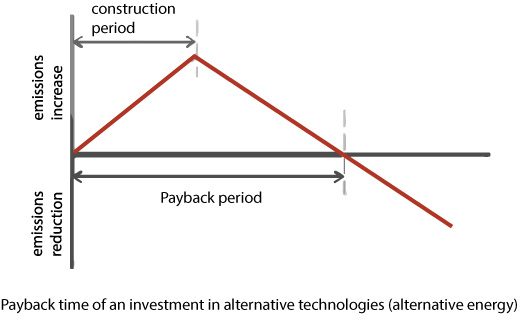
Even if we could find a technological solution, the resources required to put this into place would mean a sustained and notable increase in emissions and resource extraction until this infrastructure is built. Then, it is only after quite some time that we actually see the benefits of such technology. If, of course, it is not too late. The above image explains this.
The other part of this ideological standpoint is to believe that it is possible to control and manage the biosphere. Mario Giampietro’s comments on energy usage have already shown us that human beings are nowhere near capable of managing the water cycle on Earth, given that we only require 11TW per year, versus the 44,000TW needed for the water cycle. Global systems in the biosphere are simply too large and too complex, for human beings to even begin to try to manage.
Likewise, we do not know enough about these systems to pretend that we could decide how to manage them properly. We know that optimisation is not one of nature’s goals, and that natural processes are extremely wasteful. If we adopted circular economy logic of optimisation, efficiency, and zero-waste in ‘regenerating the environment’ we would not be creating something natural; rather we would be acting in ways entirely against the natural laws operating in the environment. If we tried to start adding nutrients into ecosystems which no longer have the same balance of life that they had before, we could simply make everything worse, destroying the new balance of life which has established in these places. We simply do not have enough knowledge about ecosystems to believe that our management and governance will be able to restore the environment to some romanticised previous state of balance and harmony. Read Giampietro’s article here for a more scientific explanation of this.
To sum up this position, here’s the argument in Giampietro’s (very technical) words: “The success of the term circular economy can be seen as an example of socially constructed ignorance in which folk tales are used to depoliticize the sustainability debate and to colonize the future through the endorsement of implausible socio-technical imaginaries.”
Refuting the three principles of the circular economy
- Design out waste and pollution. This is impossible and unnatural. Nature is incredibly wasteful, and human beings will never be zero-waste. We also cannot cut off the inputs of energy, food and nutrients into our economic system. Circularity is not possible within the biosphere. We cannot design a biosphere in which waste doesn’t occur – we are bound to nature’s laws.
- Keep products and materials in use at their highest value. Recycling is great, but consumes large amounts of energy, and portions of the material are lost every time we recycle. We cannot even begin to talk about managing or quantifying products and materials in the biosphere like water, nutrients and energy, which form half of the diagram of the circular economy. These are not maintained by natural systems at optimal conditions, and cannot be valued.
- Regenerate natural systems. To believe that we could regenerate natural systems would be to believe that we understand how these systems work. We simply do not have this knowledge. We cannot think that technological advances will enable us to intervene in natural processes that have been created over billions of years, nor can we expect to create a technological alternative to natural processes in the space of 20-30 years.
For a full academic summary of the critiques of the circular economy, and all the research that is being done into this idea, have a look at the paper by Hervé Corvellec, Alison F. Stowell, and Nils Johansson: Critiques of the circular economy.
To sum up: is the circular economy still valuable?
The circular economy is a great idea for architects, product designers, technological innovators, and those working in the design of goods for consumption. Reduction of waste and lower use of resources is fantastic and a necessary way for human societies to conform the ecological crisis. It is necessary for us to stop extracting more and more natural resources, and begin dealing with the enormous amounts of waste that we produce. Lower emissions are also a great and necessary step towards an ecological future.
The circular economy also draws attention to our current linear economic practices which are leading to ecosystem collapse and creating the wider ecological crisis. Ensuring that companies and individuals are aware of this linear system is an important part of ecological activism. However, companies should be aware that the circular economy is just a fictional model, to help us redesign parts of our productive systems, and not something to be taken as doctrine or a correct representation of reality. It also supports a growth-based vision, which ecologists have said for many years is incompatible with the fight against climate change.
The circular economy is not an economic model. It’s a set of principles for designers to follow. It does not describe reality, rather describes how resources might flow if we were to increase our recycling efforts. Even then, it does a poor job. The propositions of the circular economy, and its assumptions, are not those with which we must work, living on planet Earth. There are certain rules, limits, and an enormous amount of complexity still to be understood about the biosphere, that human beings have absolutely no control over.
Finally, it’s not clear that the circular economy naturally finds an ally in mātauranga Māori either. Life and nature are about balance between two forces, two worlds. Balance and opposition are key concepts in Māori views on the world (look at Georgina Tuari-Stewart’s Māori Philosophy for more on this). Ranginui the sky father, and Papatuānuku the Earth mother, along with the other gods, keep the biosphere alive. Perhaps a better representation of the circularity of an economic model with growth as its founding principle is to be found in the spiral, takurangi, which features on the logo of Āmiomio Aotearoa. Even then, economic growth and hope in technological advances are absolutely not central to the commonly described Māori worldview.
What is clear is that we have to be aware of just what lies behind the big ideas proposed to “solve climate change” and “live better lives.” The circular economy won’t lead us to infinite growth, because infinite growth simply isn’t possible on a finite planet. If we believe in technology and technological advances, we might be willing to take a leap, and place our faith in the market to develop technical solutions, but we risk becoming overly hopeful and ignoring the reality that confronts us.
It took more than 30 hours of research and writing to produce this article, which will always be open and free for everyone to read, without any advertising.
All our articles are freely accessible because we believe that everyone needs to be able to access to a source of coherent and easy to understand information on the ecological crisis. This challenge that confronts us all will only be properly addressed when we understand what the problems are and where they come from.
If you've learned something today, please consider donating, to help us produce more great articles and share this knowledge with a wider audience.
Why plurality.eco?
Our environment is more than a resource to be exploited. Human beings are not the ‘masters of nature,’ and cannot think they are managers of everything around them. Plurality is about finding a wealth of ideas to help us cope with the ecological crisis which we have to confront now, and in the coming decades. We all need to understand what is at stake, and create new ways of being in the world, new dreams for ourselves, that recognise this uncertain future.

